Hello all!
While at GDC (Game Developers Conference) I attended a panel called Raid on Rise. This was a panel from the narrative creators and directors of The Rise of Tomb Raider game. They went over their steps and how they went about creating the story behind this award winning game. While at this panel I took notes on what they talked about and I'd like to share it with you all!
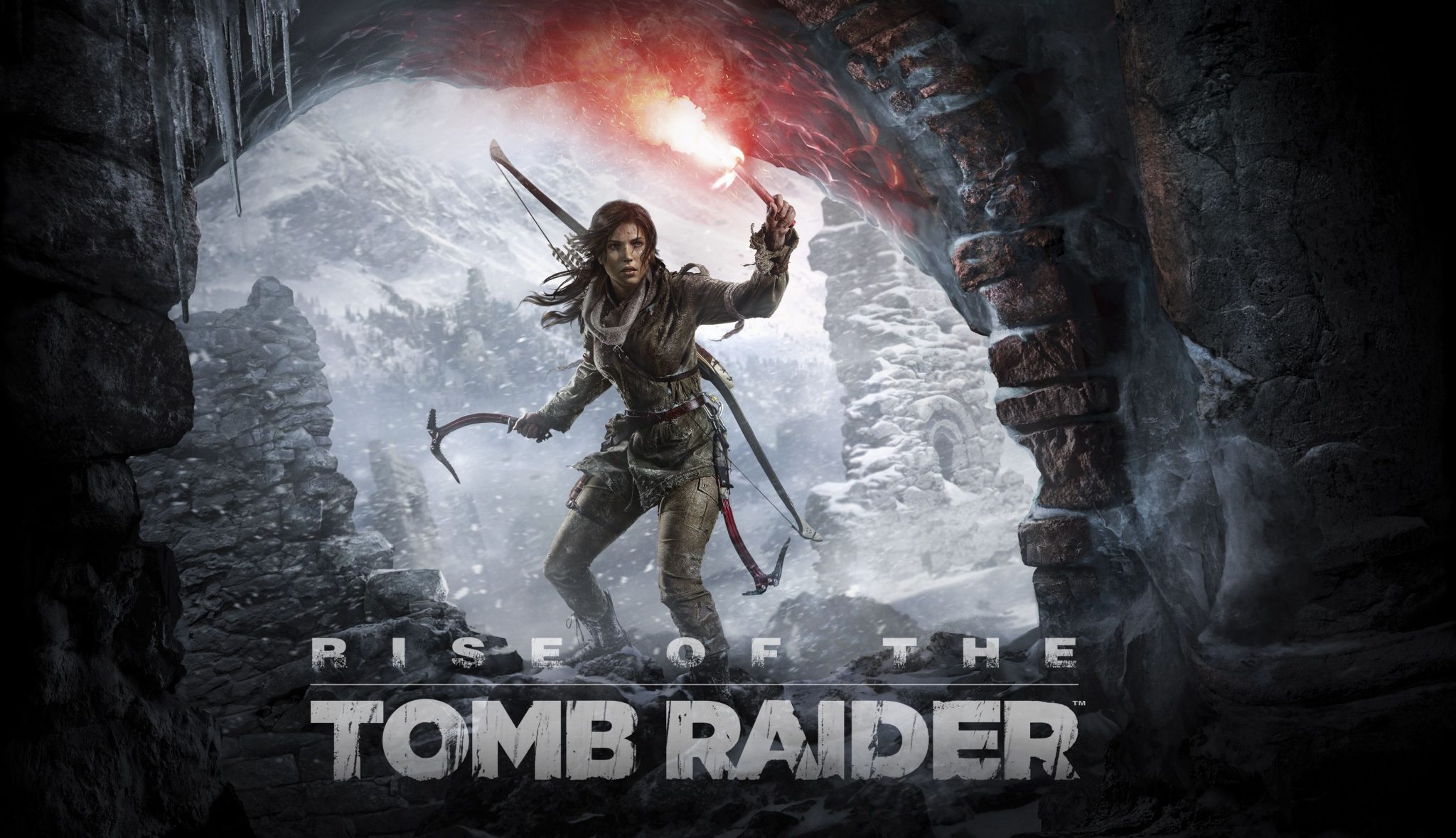
This panel was presented by Noah Hughes (Creative Director), John Stafford (Story Lead), Rihanna Pritchett (Narrative Lead Writer), Tore Blystad (Performance Director), Cameron Suey (Narrative Writer), and Jeff Adams (Senior Artist). Throughout this panel they talked about a couple main points: their story pillars, what they learned from Tomb Raider (2013), and their 8 Steps to creating the story behind the Rise of Tomb Raider.
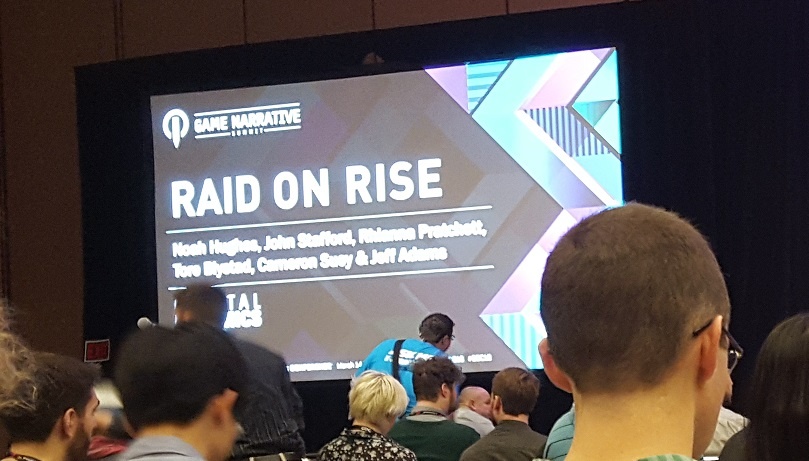
Story Pillars:
The story pillars that they were talking about represent what the focus on the story should be. The story pillars were the guidelines to how they wanted to shape the story. So what did they want?
- A Character Driven Story: This is important because it tells the writers that this story needs to focus on the main character. This is more of an obvious one but it's something that when down the road writing you can refer back to, to make sure you are keeping in line with what the story needs to be.
- Character Art: The importance of character art in a game in very high. What this team was going for is that they wanted Lara to look different at the end in comparison to the beginning. They meant this literally, in the sense that they want Lara to change physically throughout the game. We've seen this in the 2013 installment and they did a great job following through on this one.
- Including the Team: One thing, they said, they prided themselves on is that they included every person in the whole development teams feedback. No matter who they were they wanted feedback. This gives the writers diverse feedback that they can work on. It also helps the team as a whole feel like they are doing more. It gets them excited to know about the story and to help out with it. I'll touch back on this subject later because it comes back in their panel.
- Grounded Relatable Hero: We are seeing this more and more in games but what this team wanted to focus on was that in the original games Lara Croft was this amazing woman who did things no other could do. At this time in the series they are trying to make her a more grounded human being. They want the players to relate with her more and understand why she does the things she does. This creates a connection with the player that helps them want to play the game more.
- The World as a Character: This is something that I never thought about before when playing games but now that I know it, it's something I plan to look for. When creating a story you have to think of the world and landscape as a character. This area that the main character is in has a reason as to why the main character was brought to this place. The world's sounds, music, and other details are all being used to support the character and the story. Thinking of the world as a character brings out more in a story. It fleshes out the story more and helps the writers write.
- Story Placement: Everything going on in the story relates to the main character, in this instance Lara, and builds them to give the character depth. Using all of the techniques already mentioned this last pillar is used to ensure that the story is character driven. The placement of anything in the story has to help give the main character depth and all in all be about the main character.
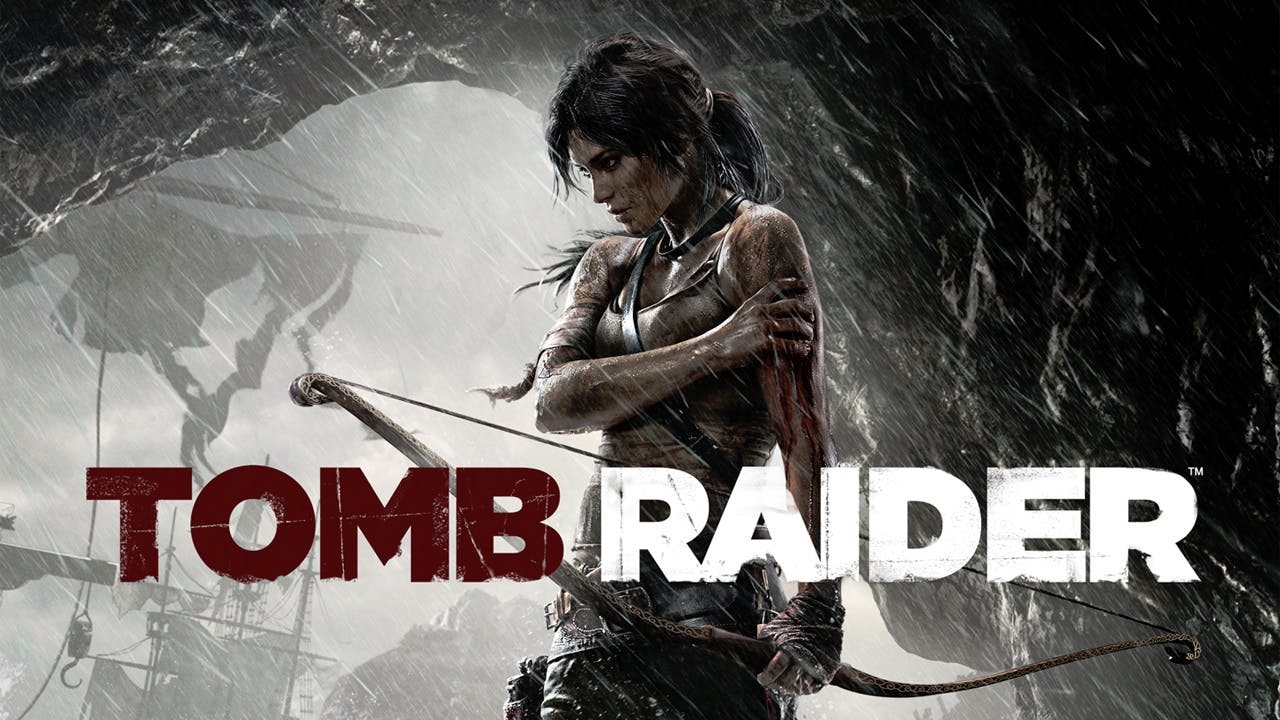
Learning from Tomb Raider (2013)
Taking feedback from the last game was a great idea. I remember playing the 2013 Tomb Raider game and noticing some things that needed to be worked on. It's always nice to know that the developers are listening to the feedback their players are giving them. It shows a lot of trust in the community and we all know the gaming community can be a little rough sometimes so I applaud this dev. team on listening and improving. It took this team of writers many tries to get the story how they wanted it. I believe Rhianna said that one scene had about 47 rewrites just to get it the right way she wanted it. The biggest thing that the fans of the series wanted was more tombs. If you've played Rise of Tomb Raider and Tomb Raider (2013) then you would have noticed that they listened to the players and gave us many, many more tombs to explore. These tombs weren't just little levels either, they were very detailed and took some time to get through. Each tomb had it's own story that helped the player get to know Lara just a bit more. The writers had also mentioned that in this game it made a lot more sense for Lara to do more tombs in this game. Even so, they wanted each tomb to contribute to Lara, her personality, and her story. The team had also decided that they cannot alienate what happened in the original game (meaning the 2013 one) Specific, and traumatic things happened to Lara so they couldn't forget that. They wanted to build on the previous games story not leave it behind. In the previous game they realized that they had way too many characters. These characters were sometimes taking away from Lara's story. In the latest installment they wanted fewer more focus characters. This helps the story stay focused on Lara and helps her mean more to the player. If you've played the latest game you might have noticed that they cut down on the number of characters that majorly contribute to the Lara. They actually cut the cinematics down to about 60 minutes overall. Another thing they focused on was Lara/Player synchronicity. Lara makes choices in the game and before the player didn't quite understand or agree with them. They wanted in the latest installment to have Lara make a choice and the player embrace it. This brings once again a connection between the player and the character. Lastly, they upped the level and amount of brutality in the game.
The 8 Steps to Creating the Narrative for The Rise of Tomb Raider
Step 1: The High Concept -
In the beginning of the process to creating a great narrative story you have to build a foundation. This helps control the idea and keeps you to the pillars talked about earlier. You also need a key value that something changes. In the recent Tomb Raider series this saying is "We become who we are meant to be when we let go of who we're supposed to be." We see Lara change drastically throughout the series and what the writers want from the player is to question "should you let go and become a new person? From there, then you can start your research. This team started their research with two myths. They deeply researched the myths of the invisible town of Kitezh and the immortal man Koschei. After reading a little about them you can see where and how this team got their start for the story of this game.
Step 2: The Treatment -
From here start putting together a skeleton of the script. Ensure that the story stays character driven and focused. At this point it's good to start throwing out ideas because believe it or not some of these concepts will make it to the final cut in some way shape or form.
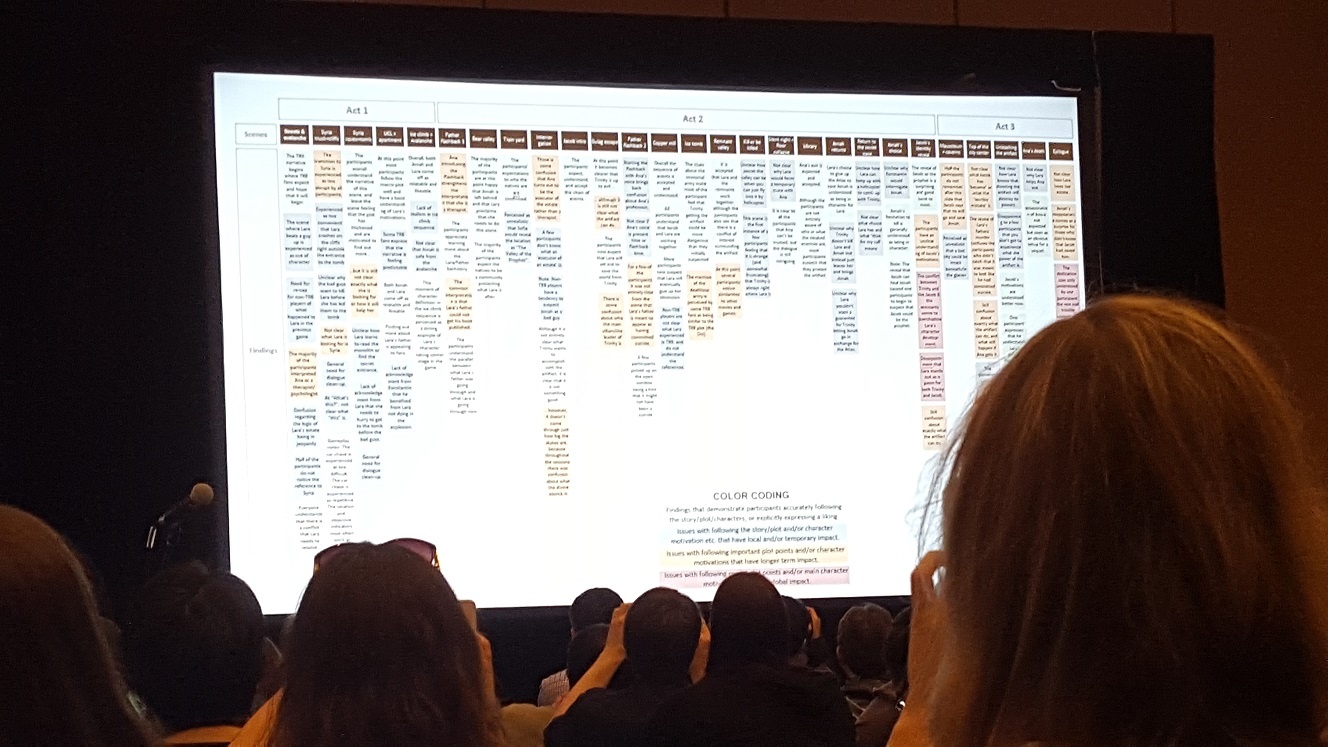
Step 3: The Metascript -
This is a giant word document of at least 100+ pages. This is a put together high level skeleton with references and relation to the game design and the narrative. These documents are like the blueprints or inspiration of the story. You will still have a lot of changes to this document but essentially it is a guide to the changes and the main idea of the story. Break down the component parts into details. This allows the writers and designers to track everything that happens, it's a tool to help them log attention to certain areas in the story. These areas are obviously showing their importance to the story by their changes. Through this you can figure out what is important to the character. Crystal Dynamics and this team had a great idea when creating this narrative. They created a hashtag bead that showed what parts of what story was important. For example, one tag that kept popping up and the team decided to focus on as a potential drive for Lara's character was #dad. #dad was used a lot and showed that she cared about him deeply. Which, in the game we see him being connected to her with the recorder she carries around with her with her dads old recordings.
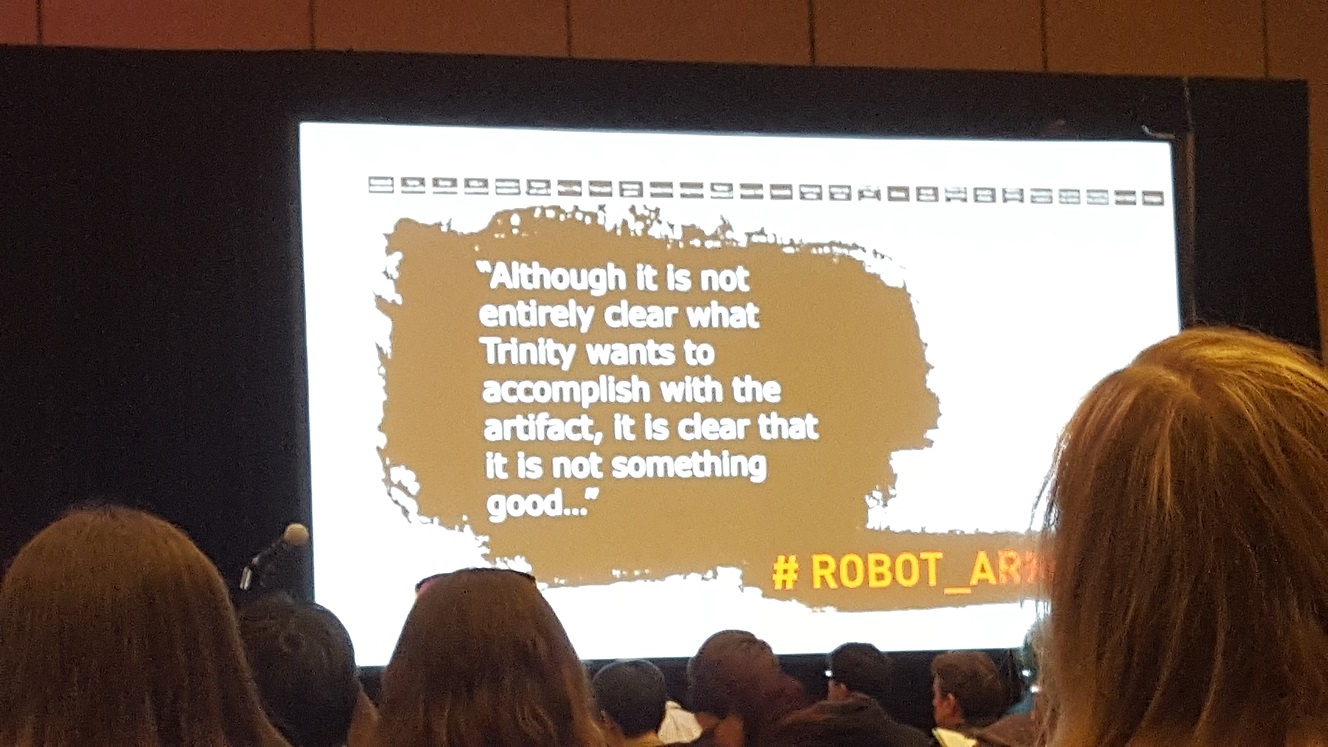
Step 4: The Script -
The metascript is essentially a rough draft for the final script. It helps with getting all of the skeleton and other information gathered through research and plotting put together. This is the part that takes time. One of the things the team mentioned was to test with the actors. They said they were really lucky having Camilla Luddington as the continuing actress for this game. She had already had previous knowledge on the game and felt really in tune with the character Lara. At this stage if you test with the actors you can get feedback from them and use them as a way to get what the actor feels the character would do in each situation. You should also record these for later, so you can refer back to them for help in further changes. Another thing they talked a lot about was including the whole team. They sent out emails to the team and gave a graphic of the story. They kept a character board that helped keep the entire development team interested and involved. It also would inform them of the state of the character and the narrative as a whole. If you do this in the right way then you will have people asking you questions about your story and helping you get more ideas and such. This is a great way to build interest, conversations, and inspiration. The way that this team did this technique had great results. They put a giant screen in the lobby of the building with the picture you see below that gives an overview of each character and a bit about the story. They noticed that almost everyone was stopping, looking, and talking about the board. They saw people take their lunch breaks by this and talk more about it. The got so many questions, along with a great amount of feedback.

Step 5: Supporting Narrative -
This brings us back to one of the pillars that they mentioned earlier. Giving the world a personality that helps build on the main character is something that brings a lot of depth to your game. In Rise, they included Lara overheard enemies conversations, they also included the relics and the languages. These things tell and give us important details to how the character reacts to certain situations and tells us what her knowledge of what she's doing really is. The languages that they put in the game showed Lara learning and gaining knowledge, so we see her react to things she doesn't know and how she overcomes her lack of knowledge. Once the writers know about the areas in which this game was to take place, they were able to put together he layers of history. A large amount of research goes into this stage and helps define and identify these relics and other items. The more research happens to identify things, the more the character becomes relatable to the area. These relics and languages in the game help Lara stand out as an archaeologist and helps remind us who she is. These relics and other stuff also helps encourage the player to go out and google the things they find, wondering if they are real. The amount of research that they did resulted in numerous outcomes. The Deathless ones in the game came from a bit of research that gave them an idea in which they pursued to get an idea of what exactly they wanted the deathless ones to be. In this game we also see a secondary narrative. Lara speaking to herself at the campfires is a secondary narrative that helps the player understand the internal thoughts and voice of Lara. Sitting at these campsite, Lara digests what has happened and is a great way for the player to get into Lara's head. At this point you can bring in your own personal stories to bring life to the character. By pulling your own experience into the story you put yourself at peace with the story and helps the player understand the character and possibly make the character seem more grounded. These secondary narratives are great ways to implement gameplay and narrative at the same time. For example these campfire area's where Lara is talking to herself, the player can also work on their equipment and go though a lot of other menus while still listening to the narrative. Everything, even the placement of the environment relates to the story so keep that in mind.
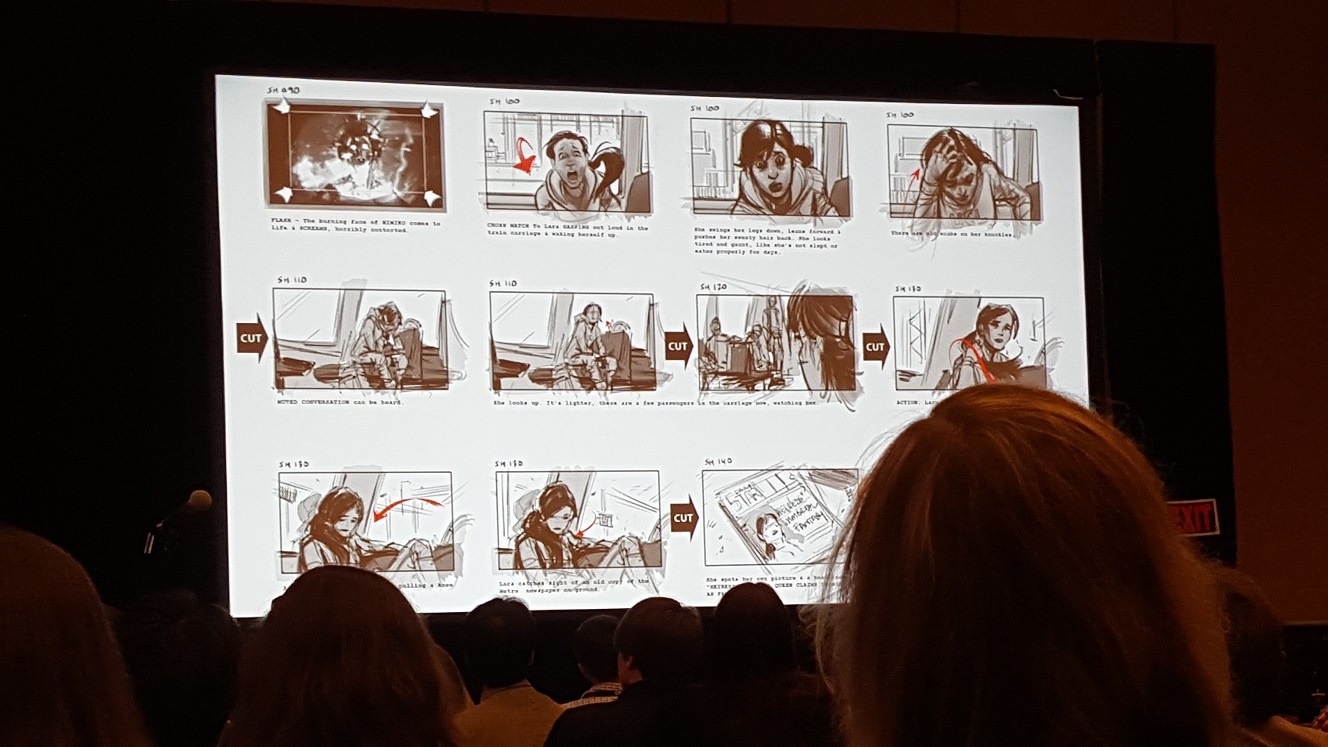
Step 6: Word to Picture -
This step is the storyboarding process. Applying those hashtags talked about earlier to these in multiple situations. Several iterations of this helps change and shape the story better. Sometimes voice acting is more focused on the performance so having a storyboard to go with it can greatly help you. Voice actors are so important to creating games, and in games like Rise of Tomb Raider, getting an emotional voice can just bring a character to life. Getting this step to the state where it's almost how it will be in the final cut will help immensely. In general testing with visuals is a very easy way to identify errors and issues and also makes it much easier to fix these problems. To take this to the next level, having the narrative writers by the artists while they are in this steps helps the feedback go through sooner and you will continuously have feedback.

Step 7: Feedback and Iteration -
the story is very important to channel the player to the game. A strong focus on testing with real users helps get back gamer feedback. At this time reflect back to the hashtags and see if the users also feel that these main hashtags are still as important. The story stops working if the external stakes are's prominent. It's less relatable if this happens and makes a lot of the things they've talked about already not work. If you don't have a visual when working on the story, like in the previous step, then what the players will see they won' connect to the story because they may translate it differently than you, the writers. Once again this is the step to stress the feedback, you want feedback from everyone.

Step 8: Performance -
At this point in time you have to realize that it's ouch and expensive to change things to the story. If this is a sequel game, like Rise, having a consistent actor helps immensely. Make sure your actor has had time to understand the character. If the actor understands the character they share the enthusiasm that the character has with the other actors/characters. As much as it sometimes sucks, trying to create a relatable world sometimes means recasting to stay in sync. Ensure that your actors have been given context or they won't understand or sync with the character correctly. Making sure that they have a firm idea of the story in inevitably going to help you.
[su_youtube url="https://www.youtube.com/watch?v=i5Yg3a9Wv5Y"]https://www.youtube.com/watch?v=oi7KPDi_yQI&feature=youtu.be[/su_youtube]
Alright! so that was the panel in a nut shell. Lastly they gave some takeaways from this lesson:
Process is key. Create and embrace a process that works for you and your team from the ground up.
Cultivate feedback from the whole team.
If you can't defend a piece of your story well enough then let it go. Choose to either defend or let go.
Be inclusive of the whole team.
Alright guys and lastly, my advice for what not to do in a narrative story: Batman vs. Superman
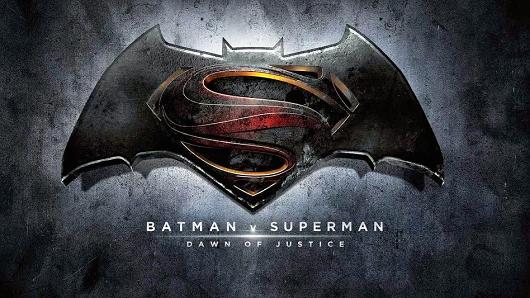
That's all for today!
Karina



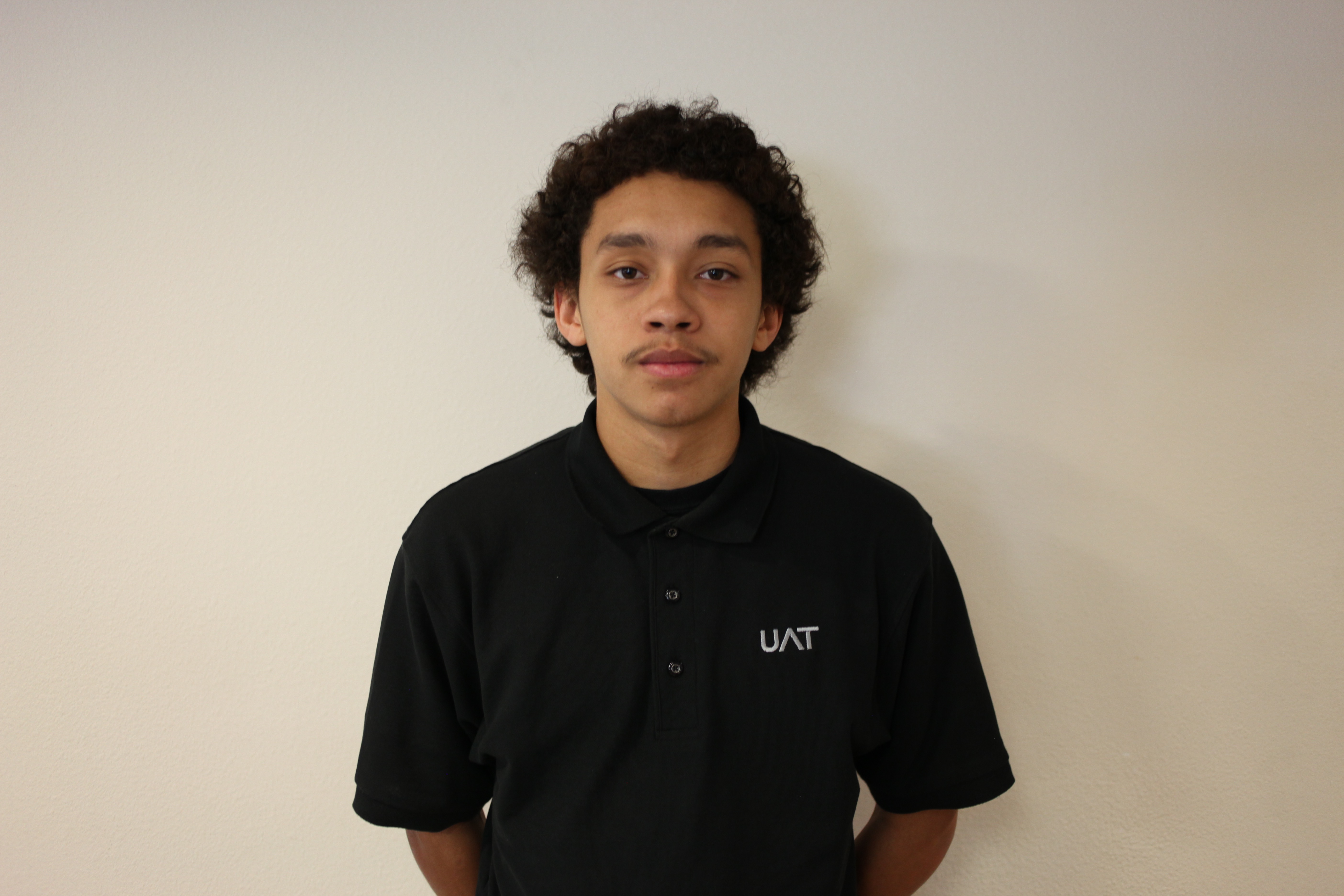


Comment